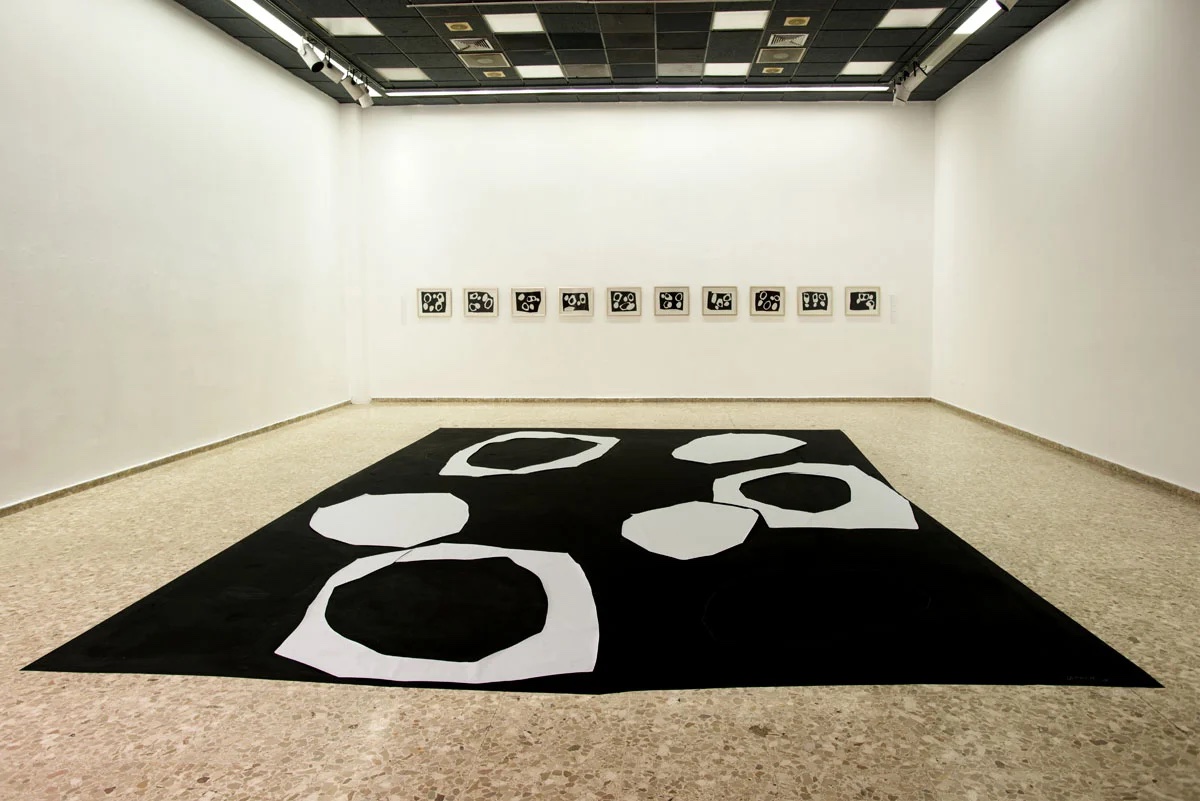It is a group that was born from “Form and Void”, that large collage-installation exhibited at the MAM (Museum of Modern Art) at the beginning of 2013, and the group of small collages that accompanied it. The perfect correspondence between the cut shape and the space that arises from this intervention, and that we see moving in various and diverse sets and combinations. Fernando Varela, Forma y Vacío, in: Origins and primary forms, MAM, 2013.
In “Recent Works”, the pieces preserve their essential premises: the antagonistic, the dual that comes from unity and transforms into a triad; the masculine and the feminine, the creation and origin of life, or of new forms and new lives. Like Hegel[1], Varela conceives reality as formed by opposites. Each new piece seems like a variant of the one that preceded it, but they express that old philosophical problem of change, evolution, and the also old question of how to rationally understand that a thing, in this case a shape, can change. appearance and remains the same thing. Looking at Varela's recent works and returning to Hegel, we can conclude that the “encounter” between opposites gives way to new approaches and new possibilities as has been expressed through the ages by dialectical scholars. Friedrich Hegel, Phenomenology of Spirit, 1807.
We said that “Forma y Vacío” was a collage-installation, on this occasion Varela expands the languages and treats us with the subject, in a thorough manner, from the perspective of painting and drawing. Its exploration also encompasses the plane of three-dimensionality and the mobile. We know the capabilities and mastery of the different artistic languages that Varela executes with mastery and delicacy. Precise stroke like a surgeon. Reserved in the use of color, we are accustomed to the chromatic austerity with which it is expressed. The impeccable application of the paint, the mastery of the technique, the glazes that in some cases give the appearance of paper to the painted canvas, give the pieces exquisite plasticity and soft texture.
The above is the meeting place between shapes and voids, of the relationships between point and line, white and black, leading elements of the whole. There is a pedagogy of communication in these pieces, even regardless of the knowledge we have about Varela's work. When we look closely at each piece we observe that the elements are articulated in a correlational and derivational game between the plane and the line in the paintings and drawings; and between the spatial and the kinetic, in the case of sculptures, all with the mediation of contrasts and circular compositions. Even the linear ones, which could be interpreted as either a conclusion or a beginning.
We are faced with a work of deep reflections with a playful spirit, although playfulness was not the artist's intention. Personally, each piece captures us, it has nothing to do with the medium, but with the artist's way of speaking and reflecting. In the first instance it is the challenge of wanting to understand rationally, to move through the plot of the pieces, it is in that space where I find the playful moment, and then become absorbed and fulfilled.

